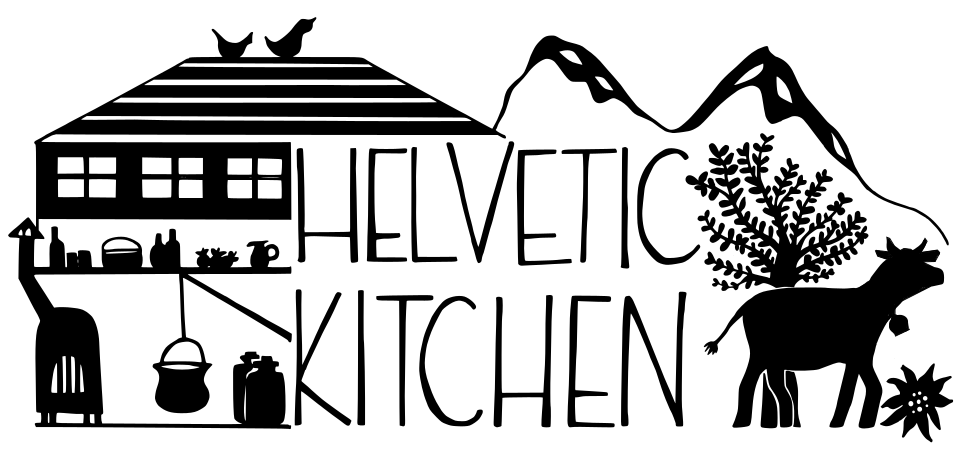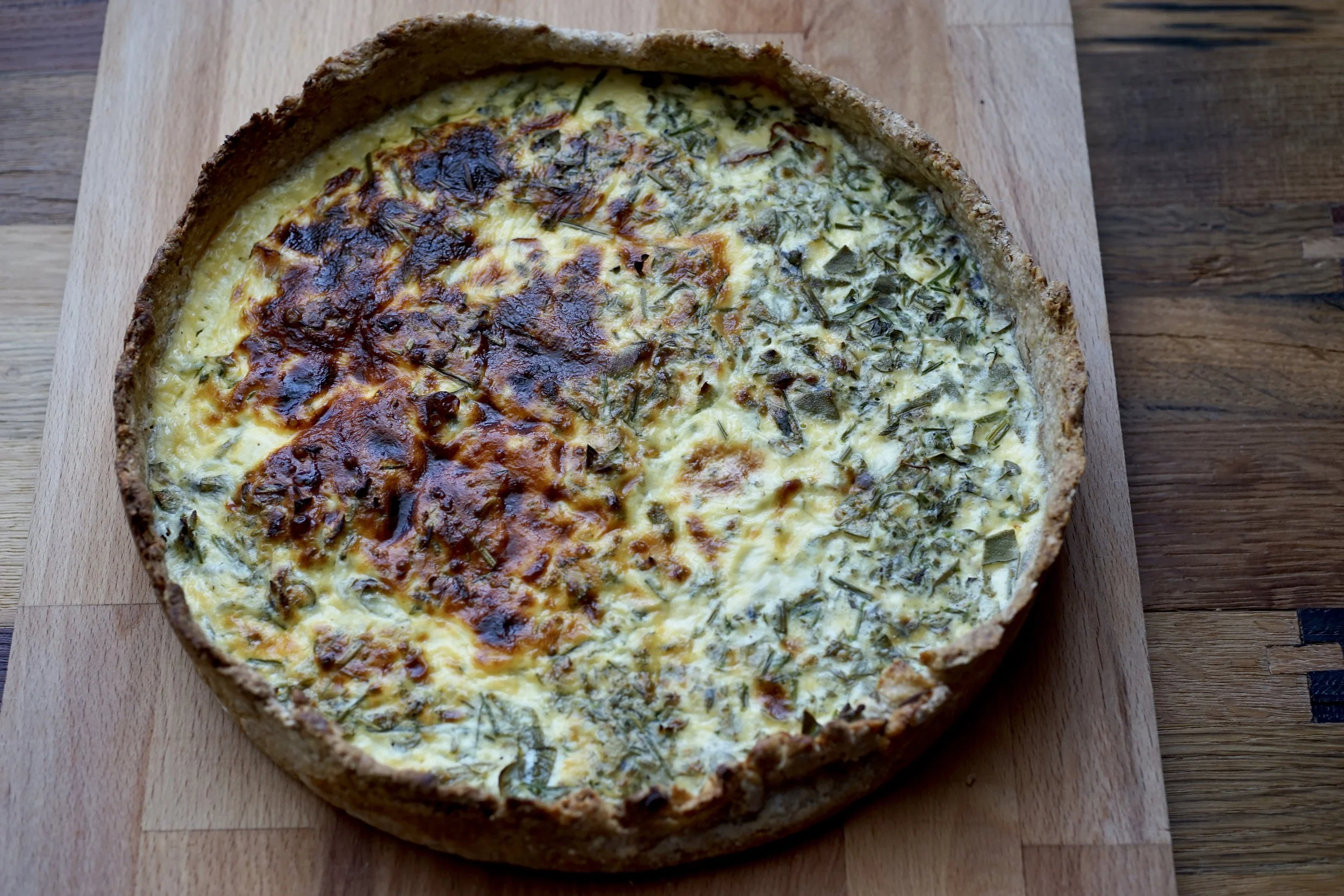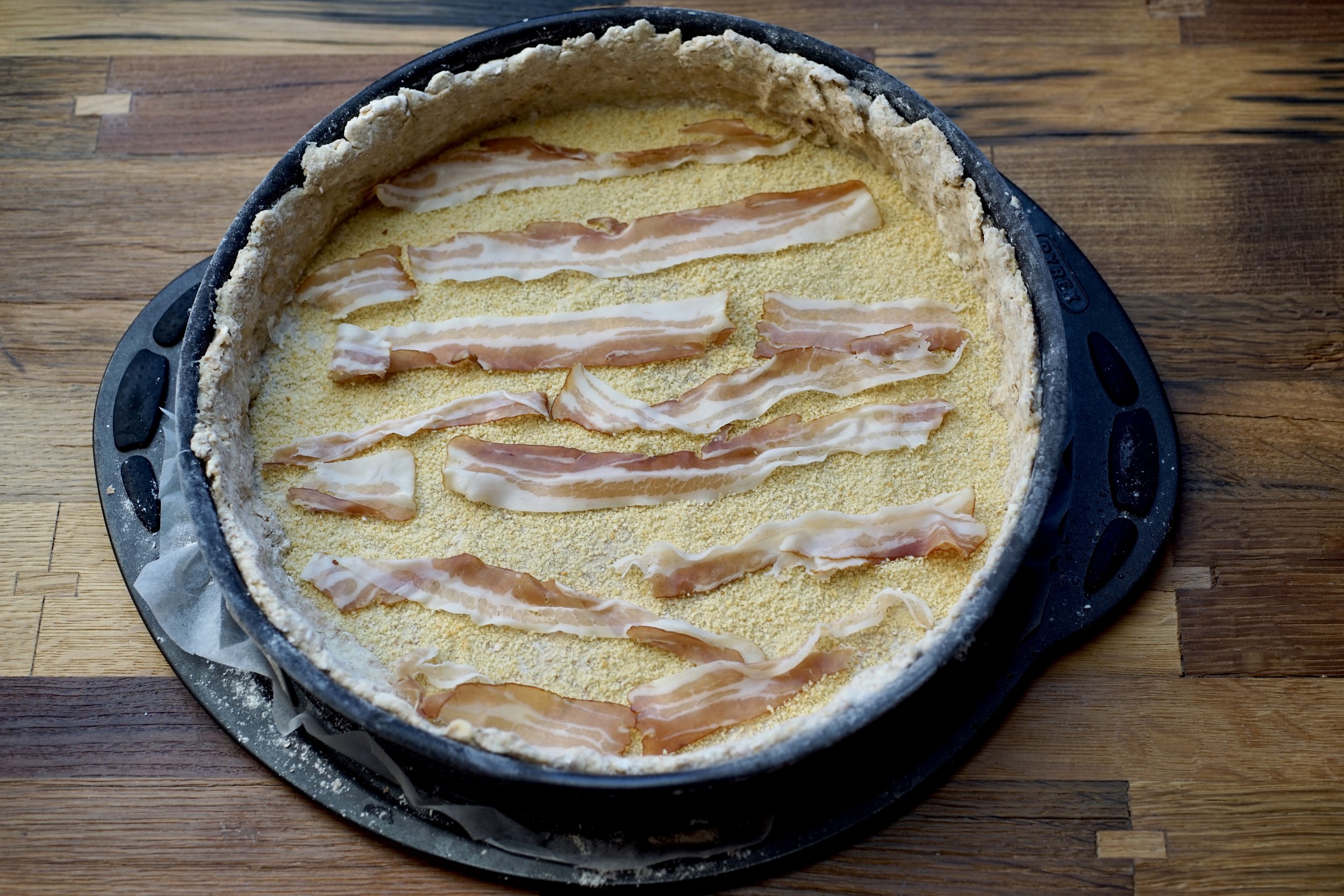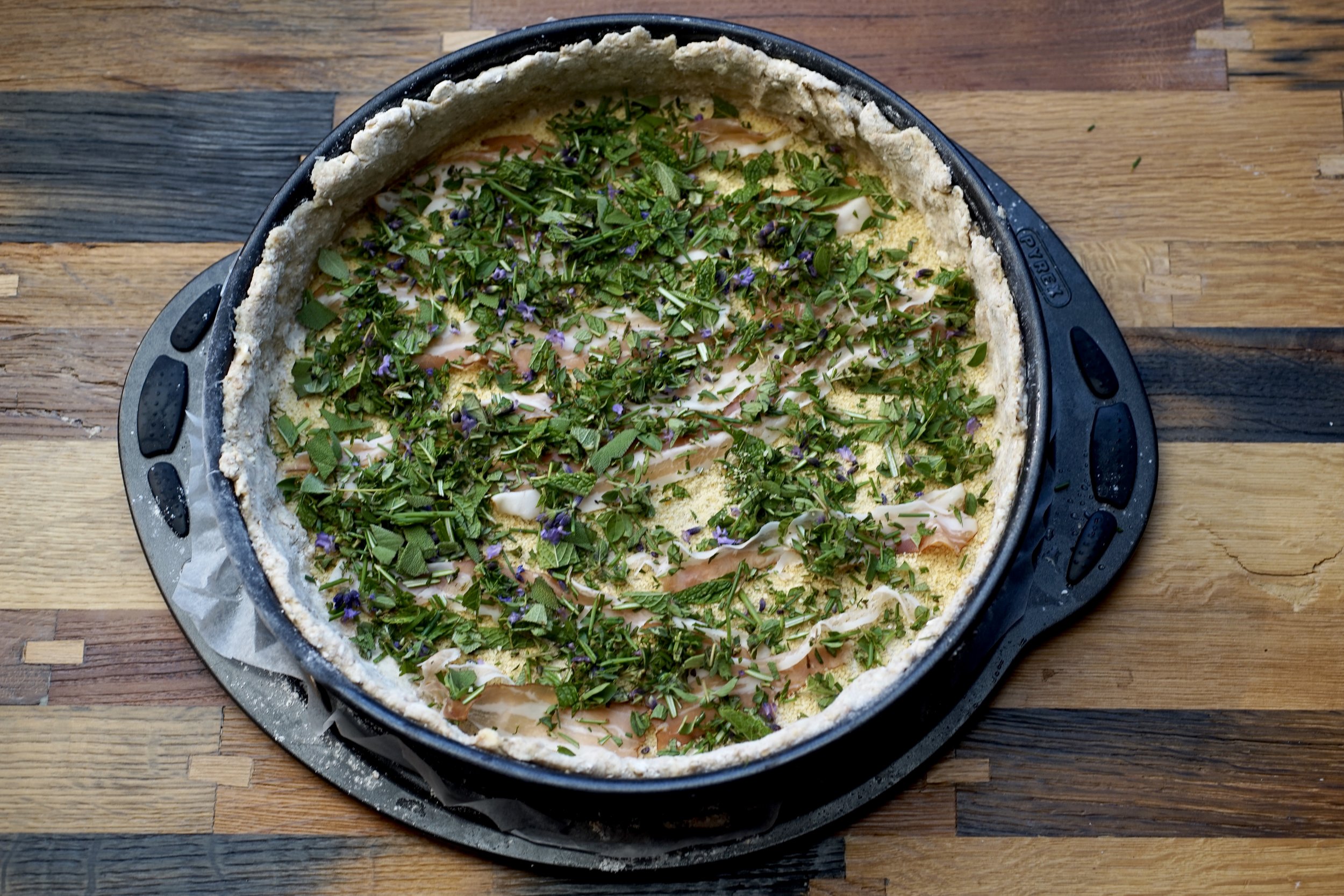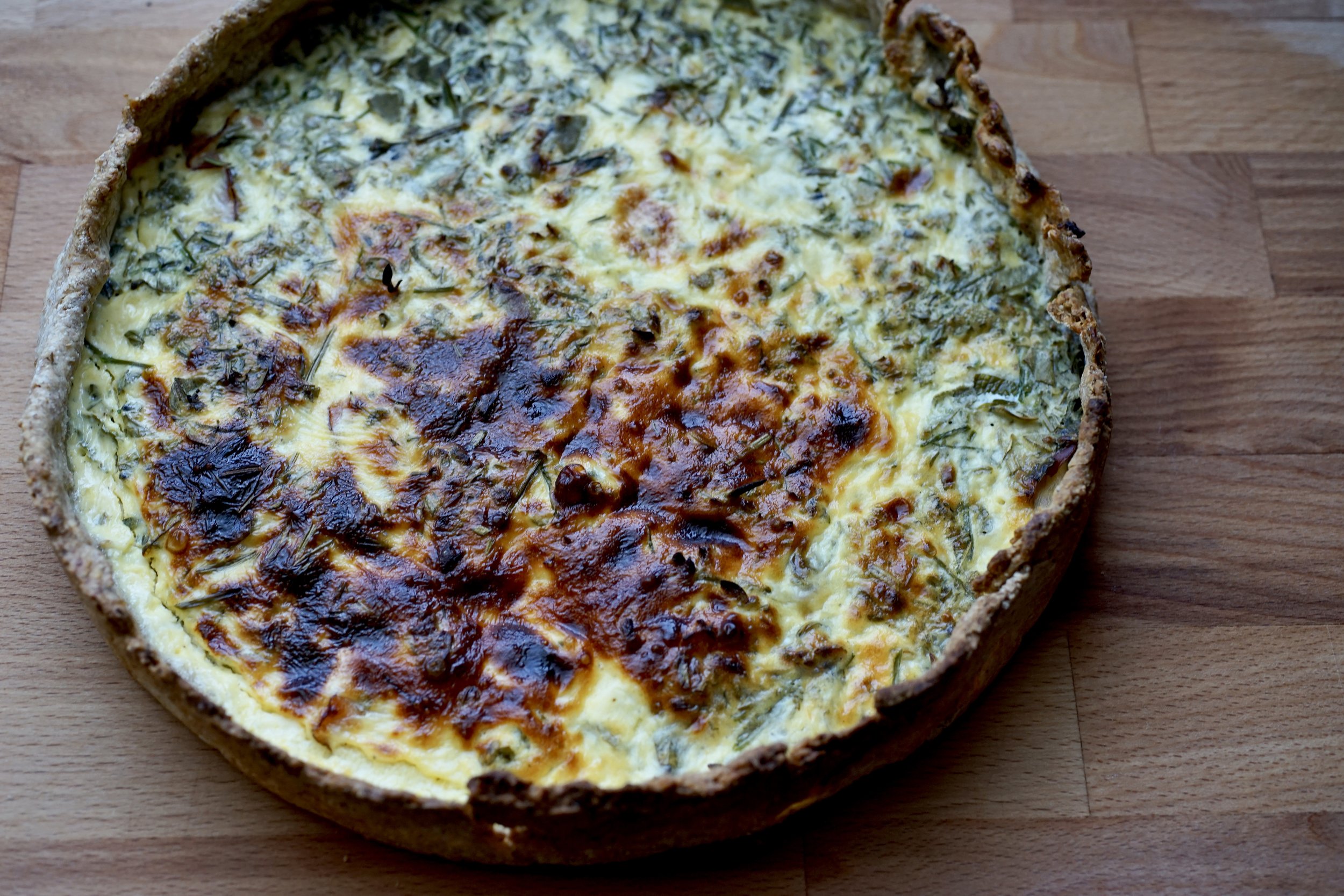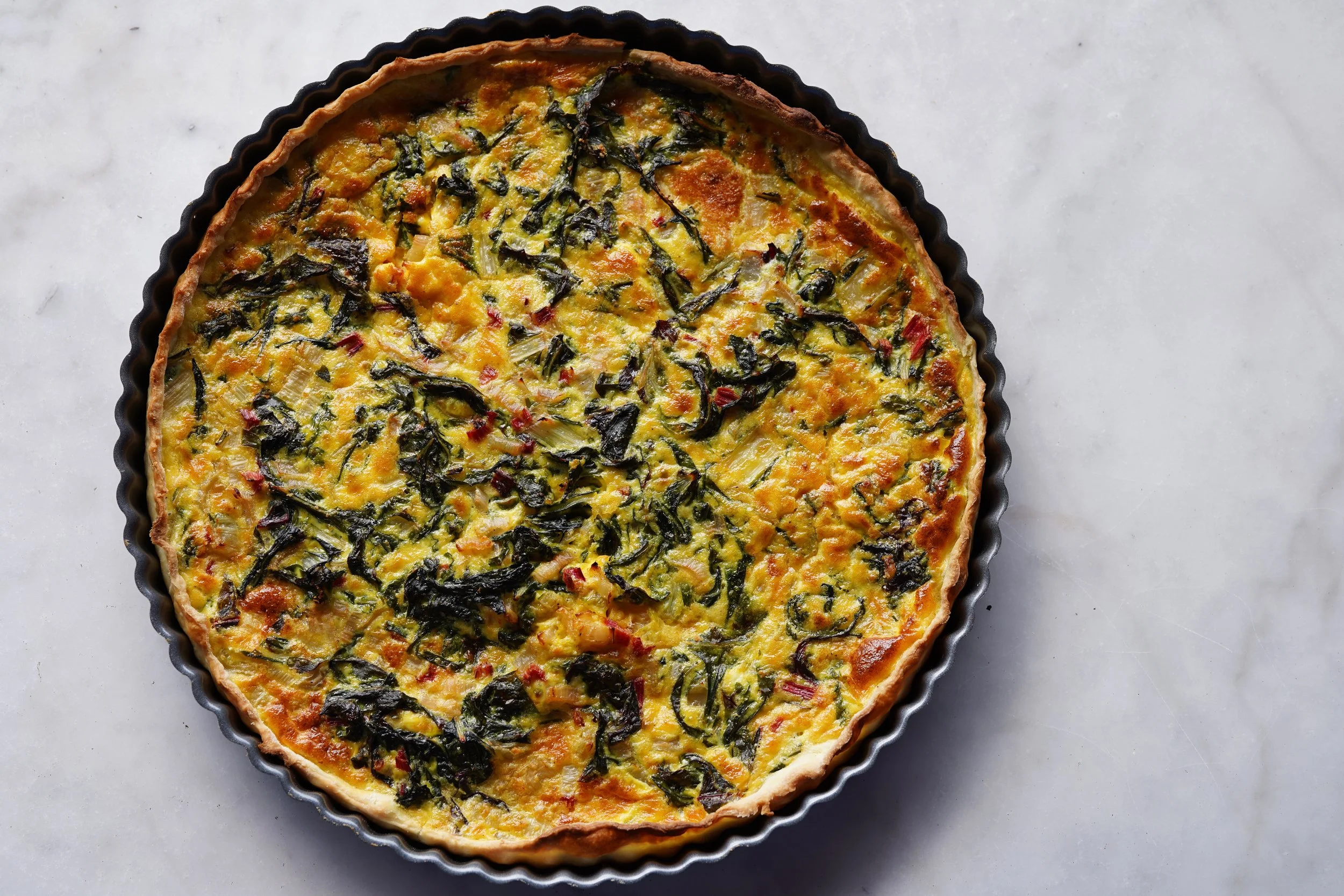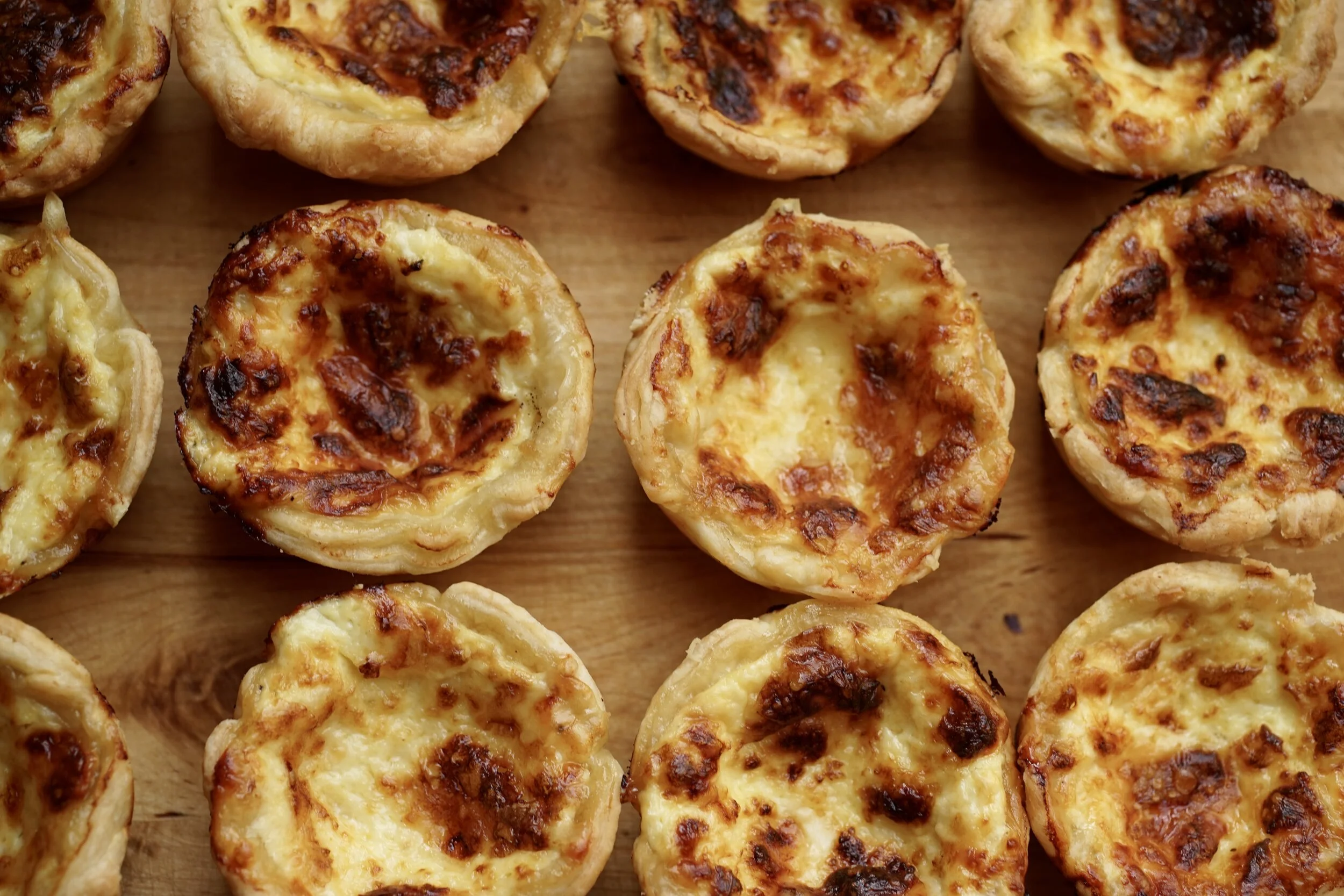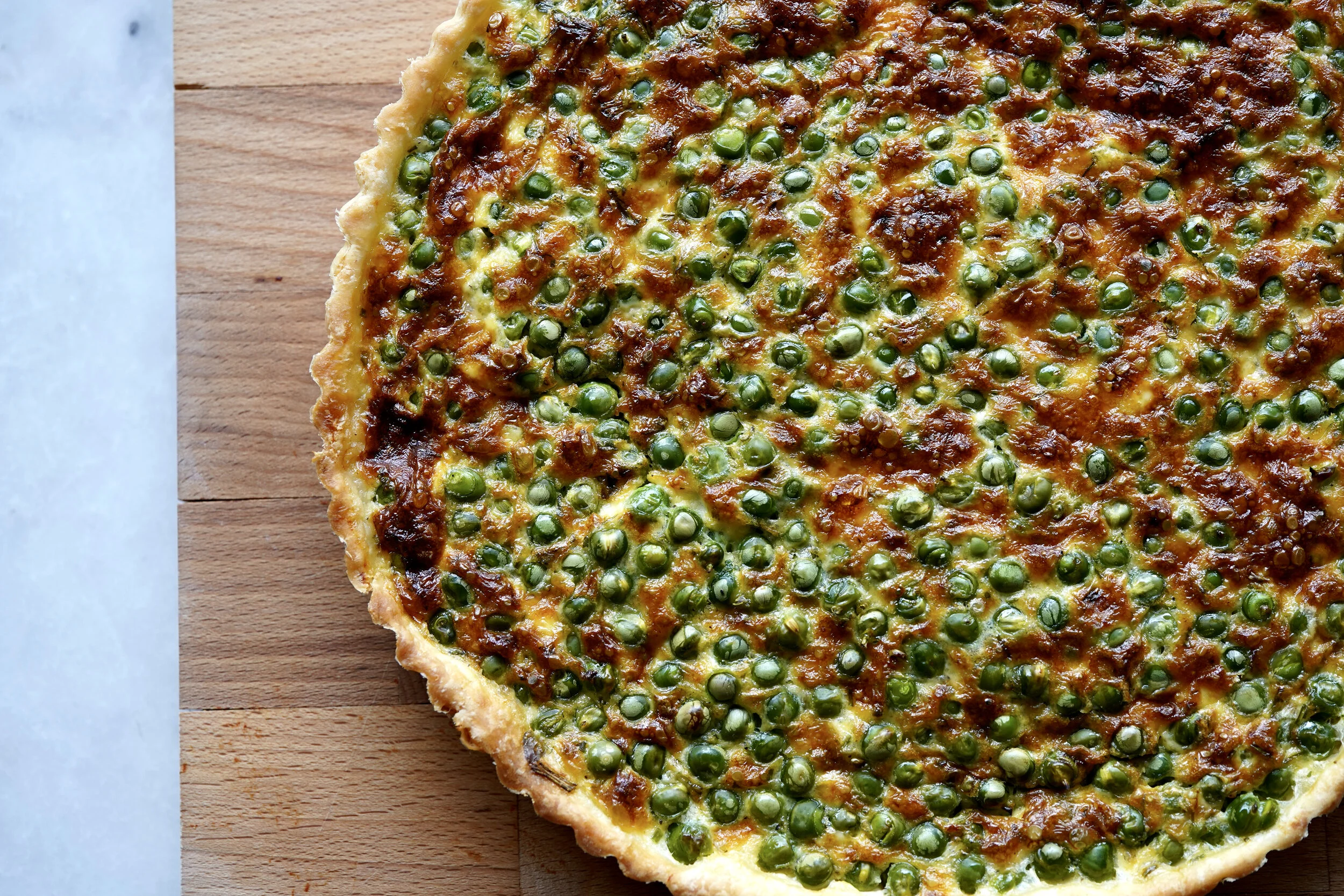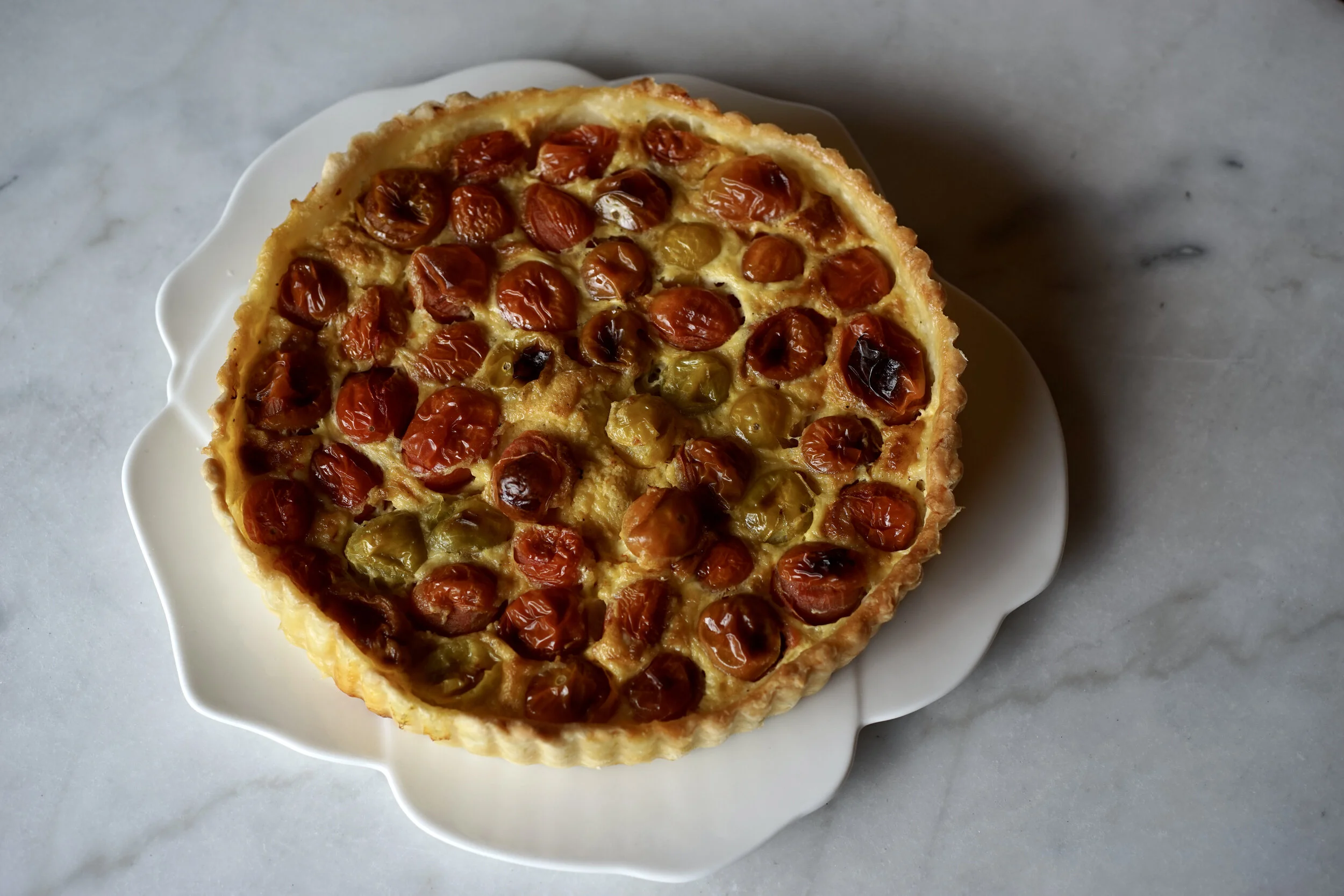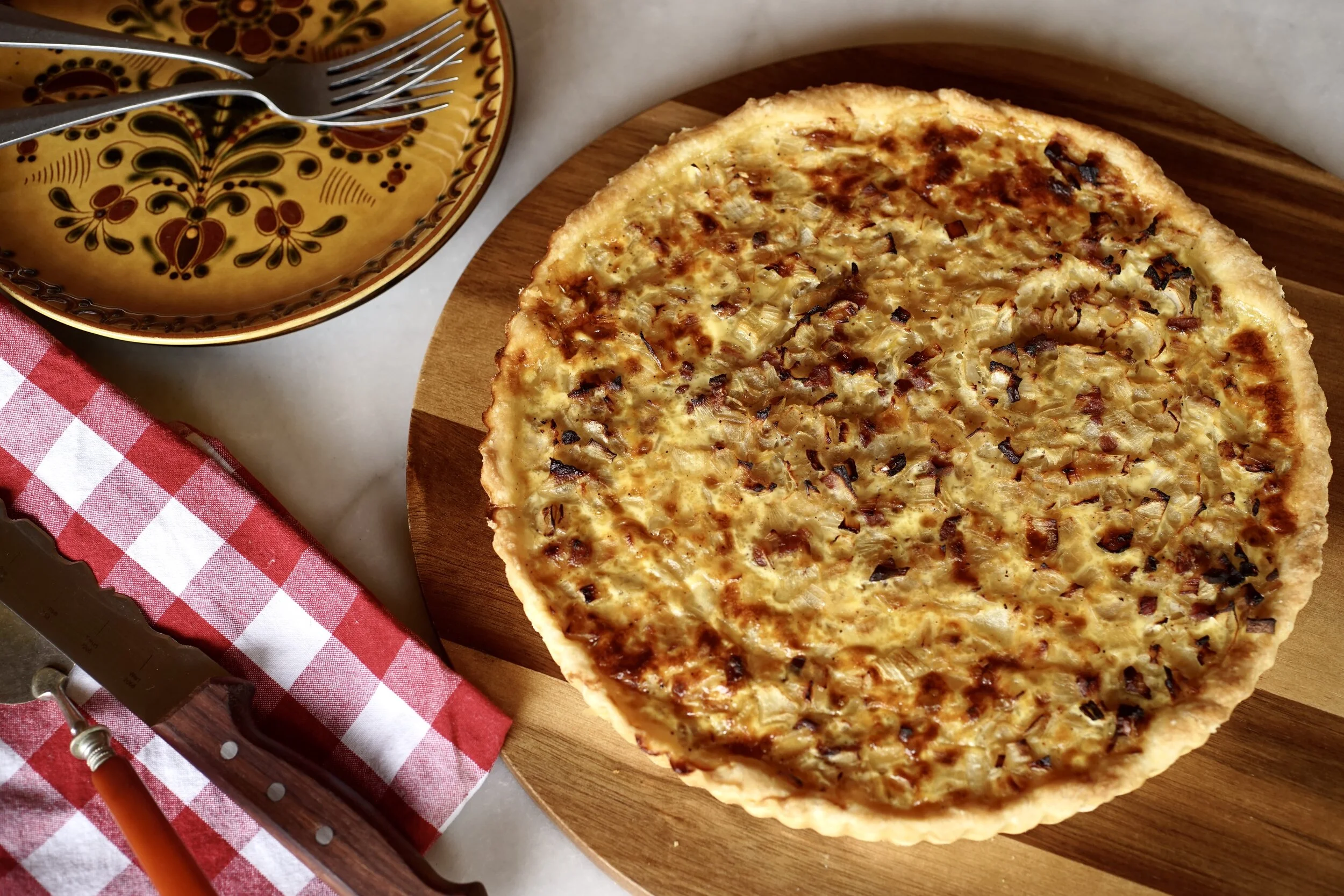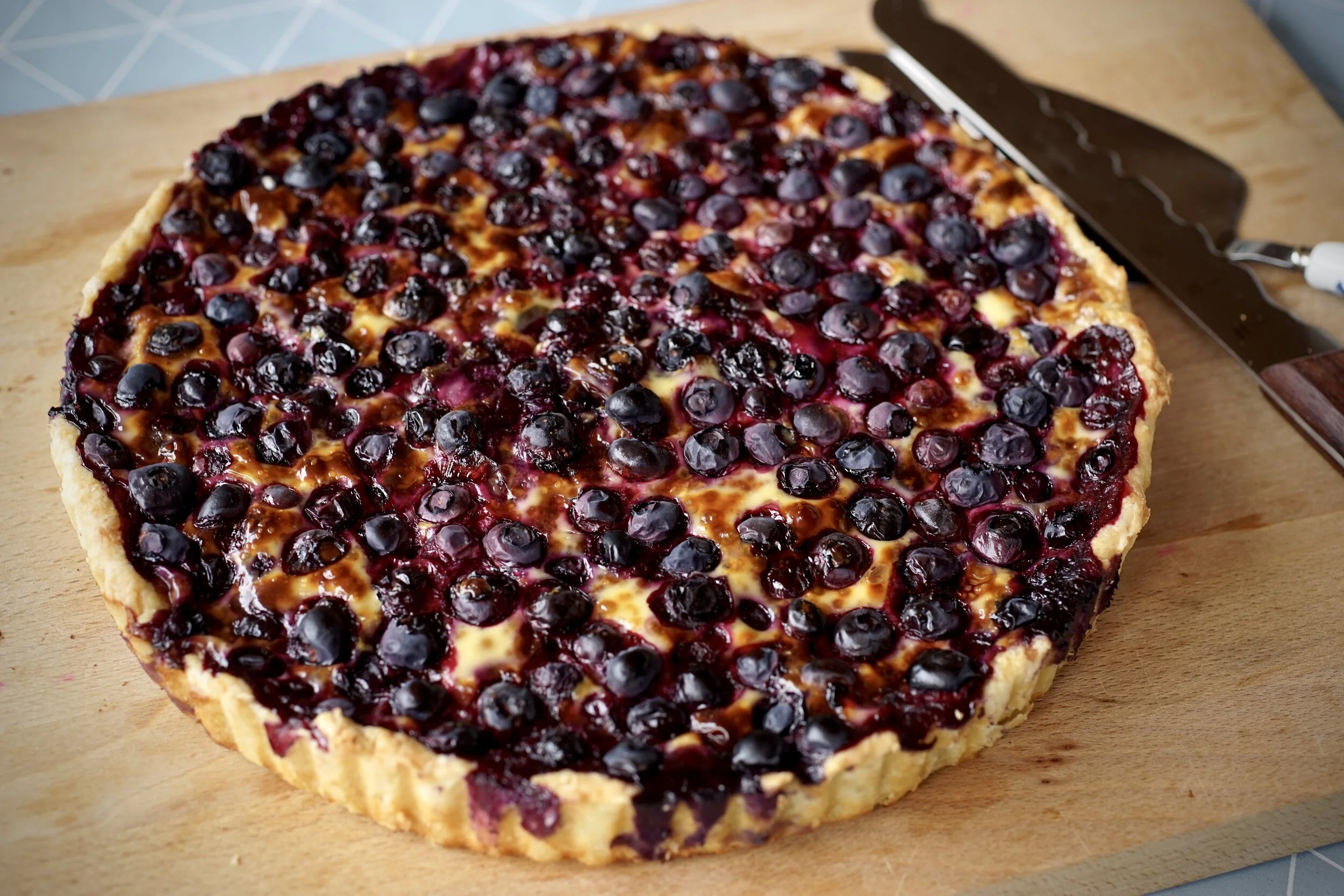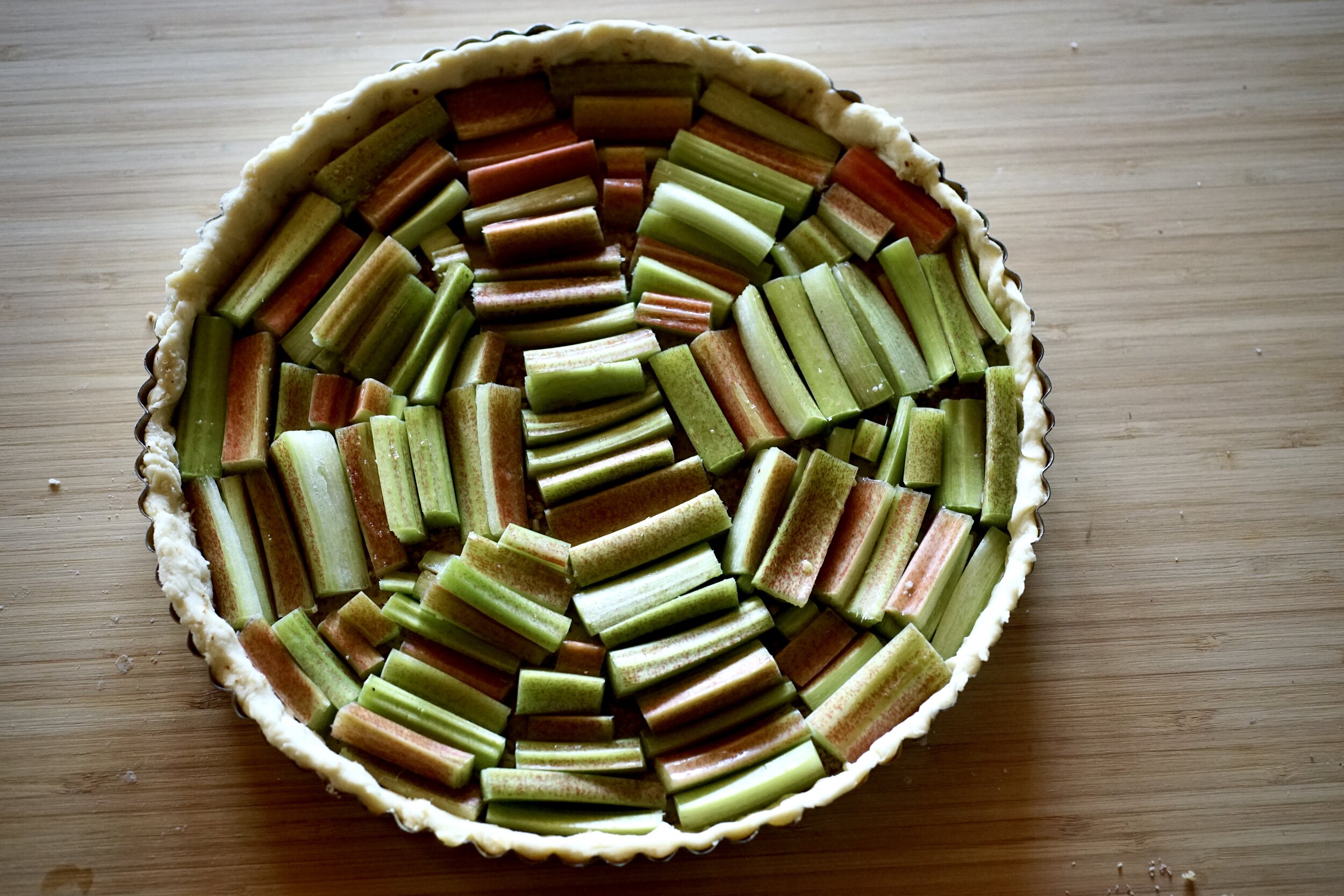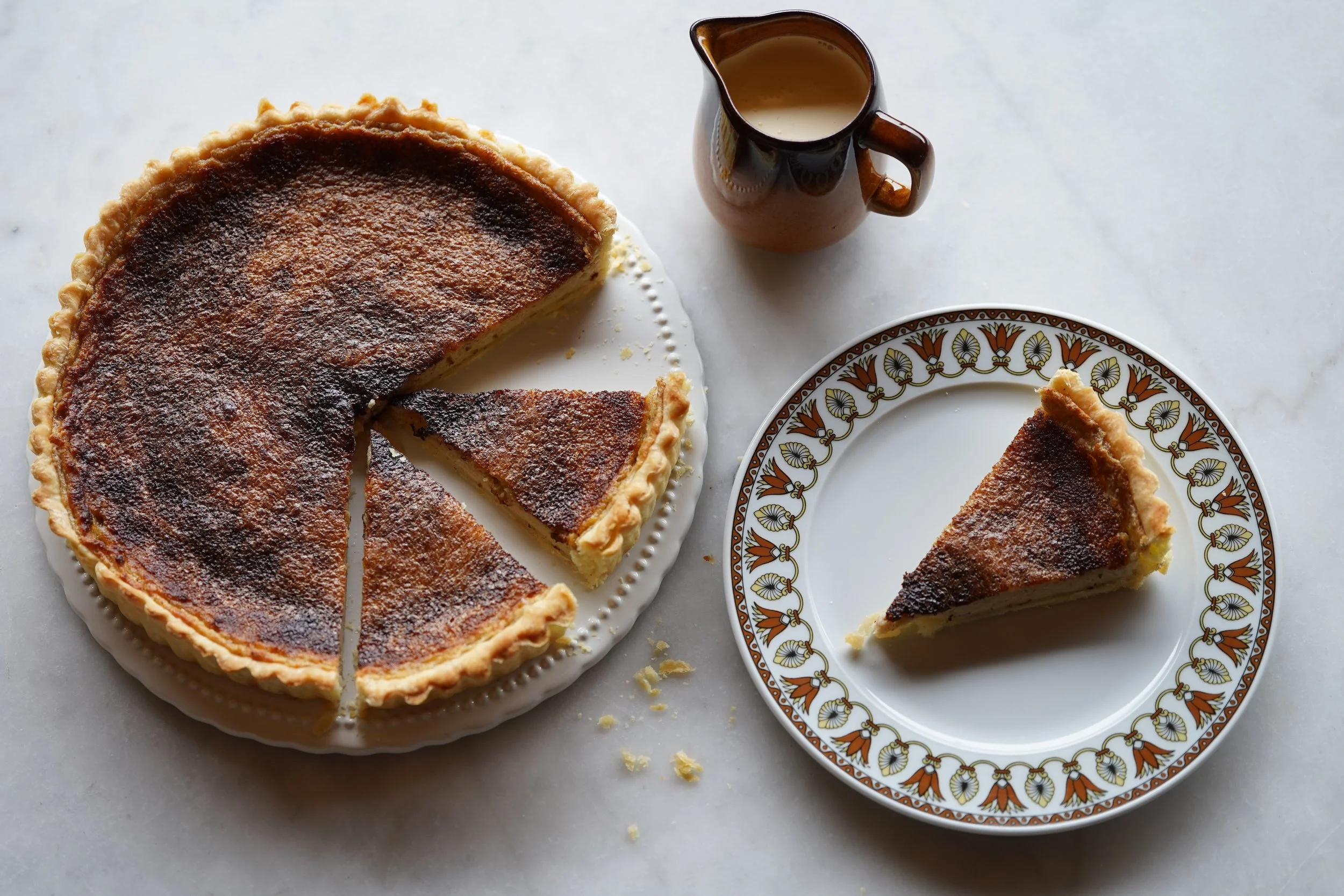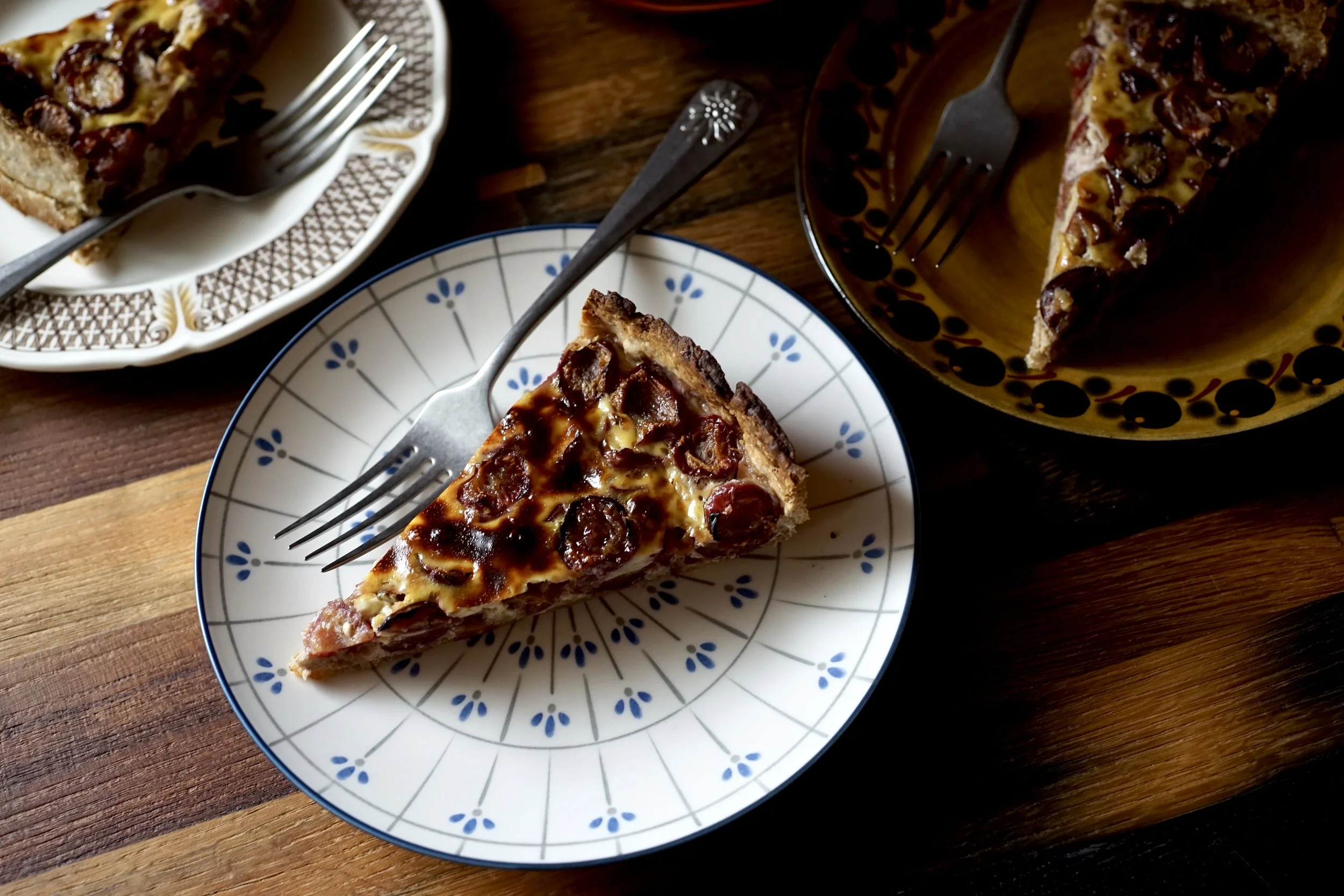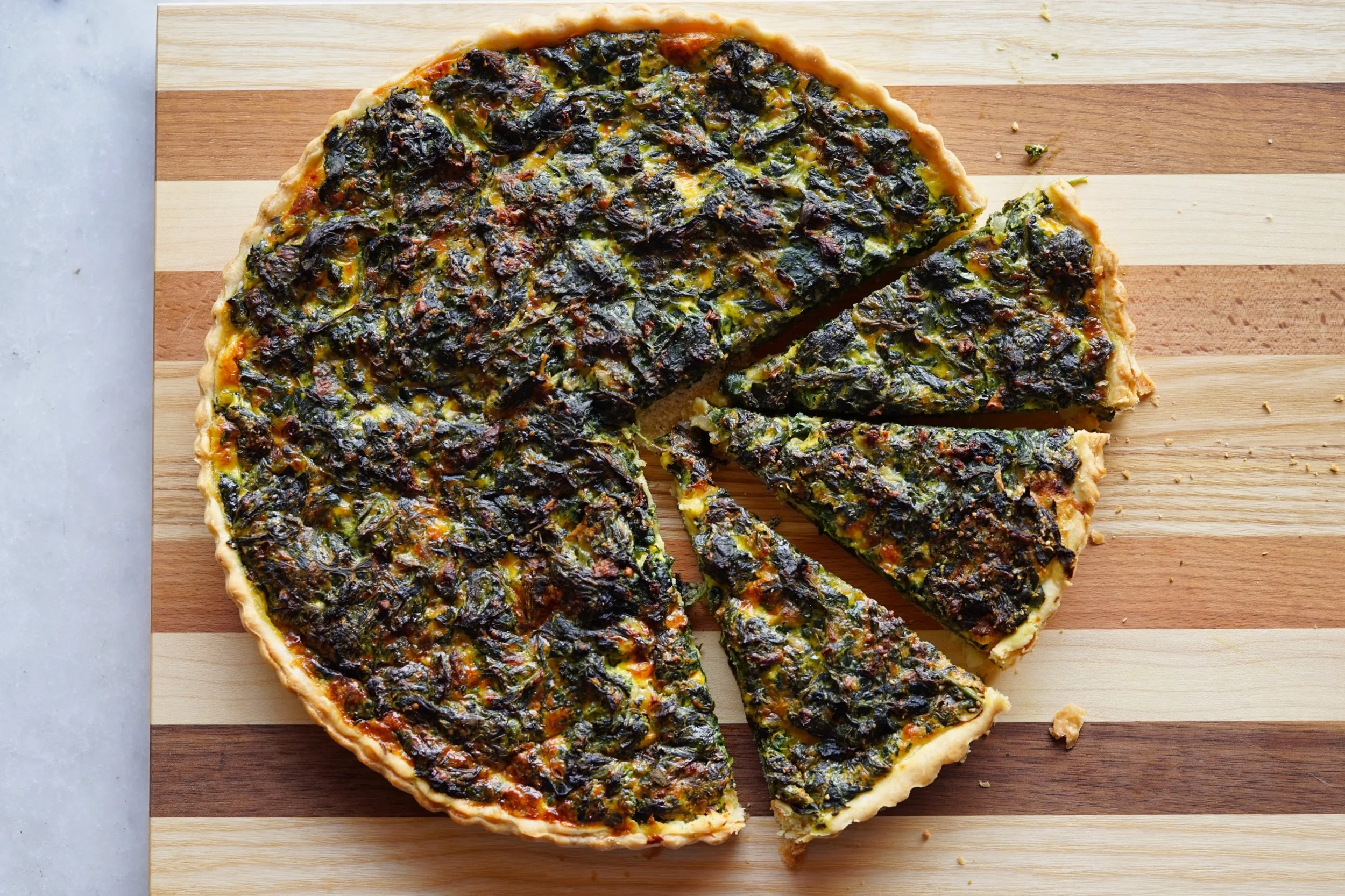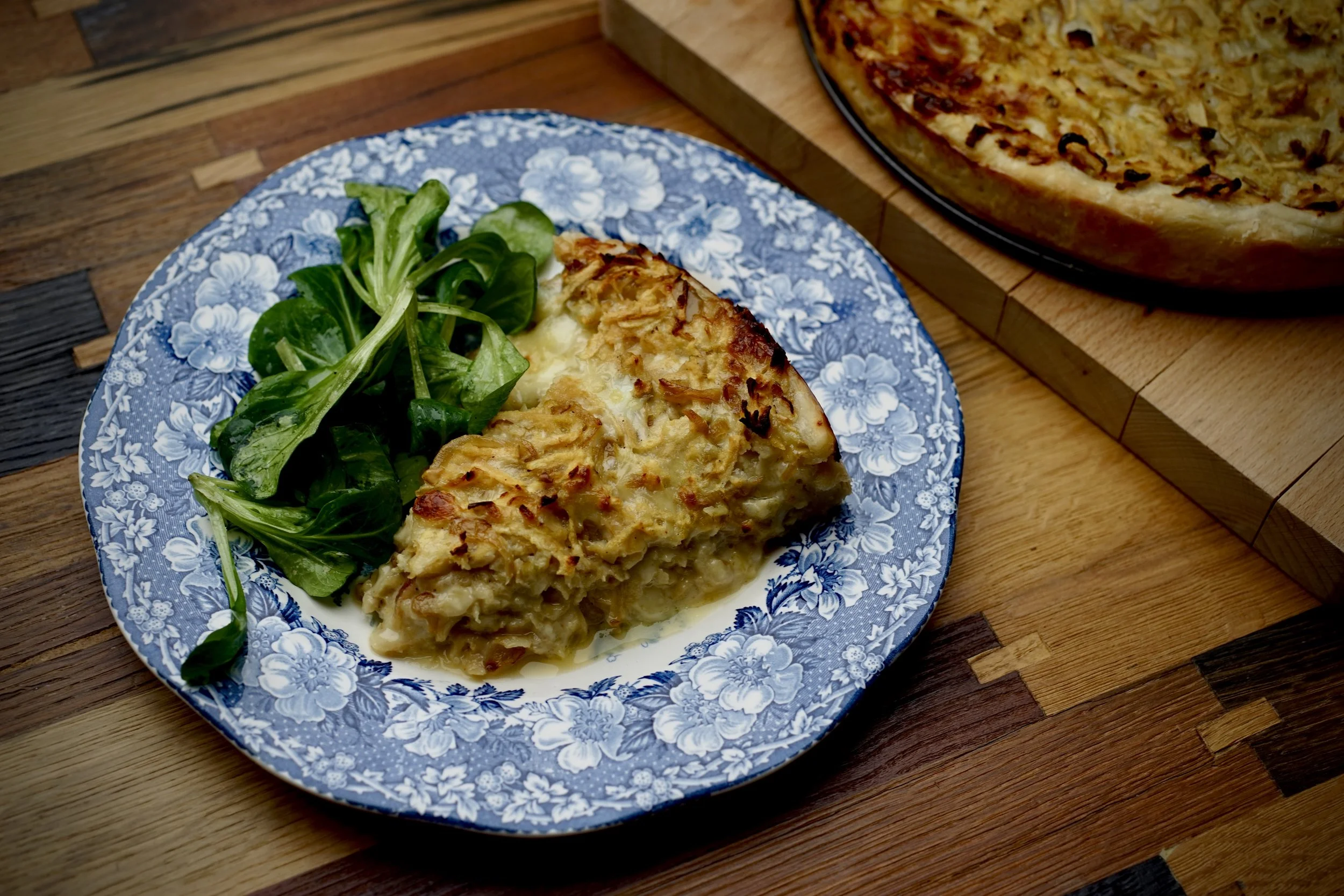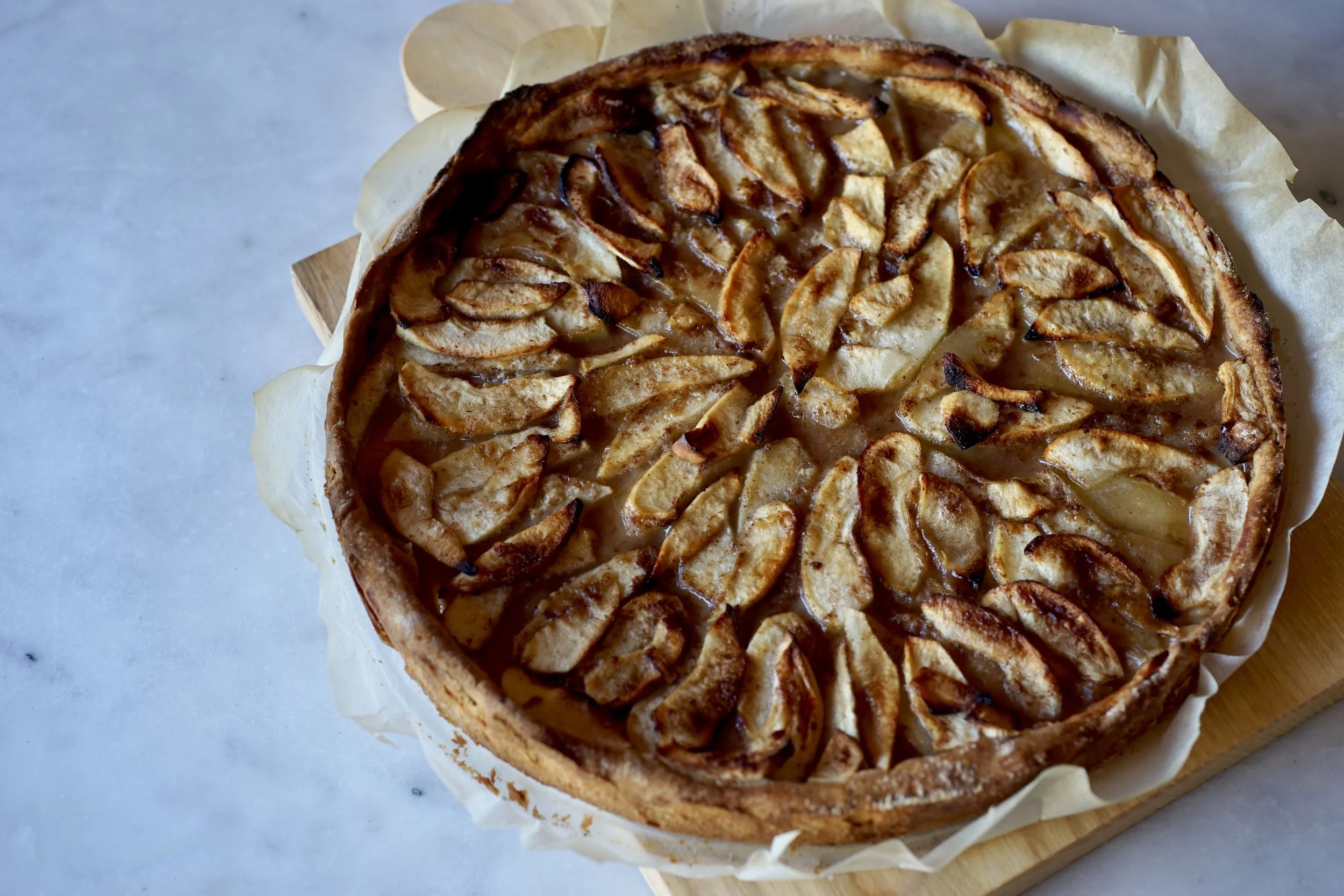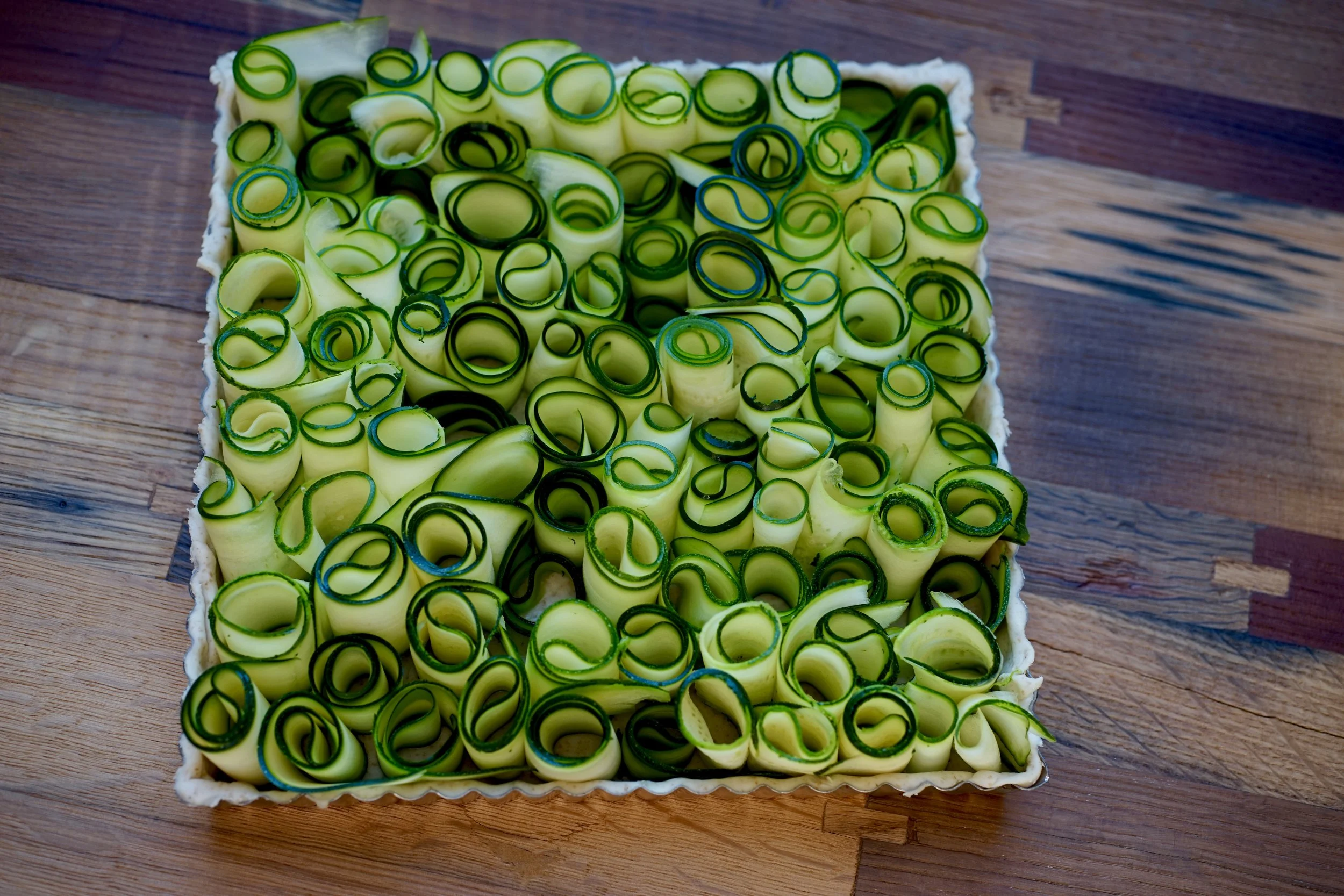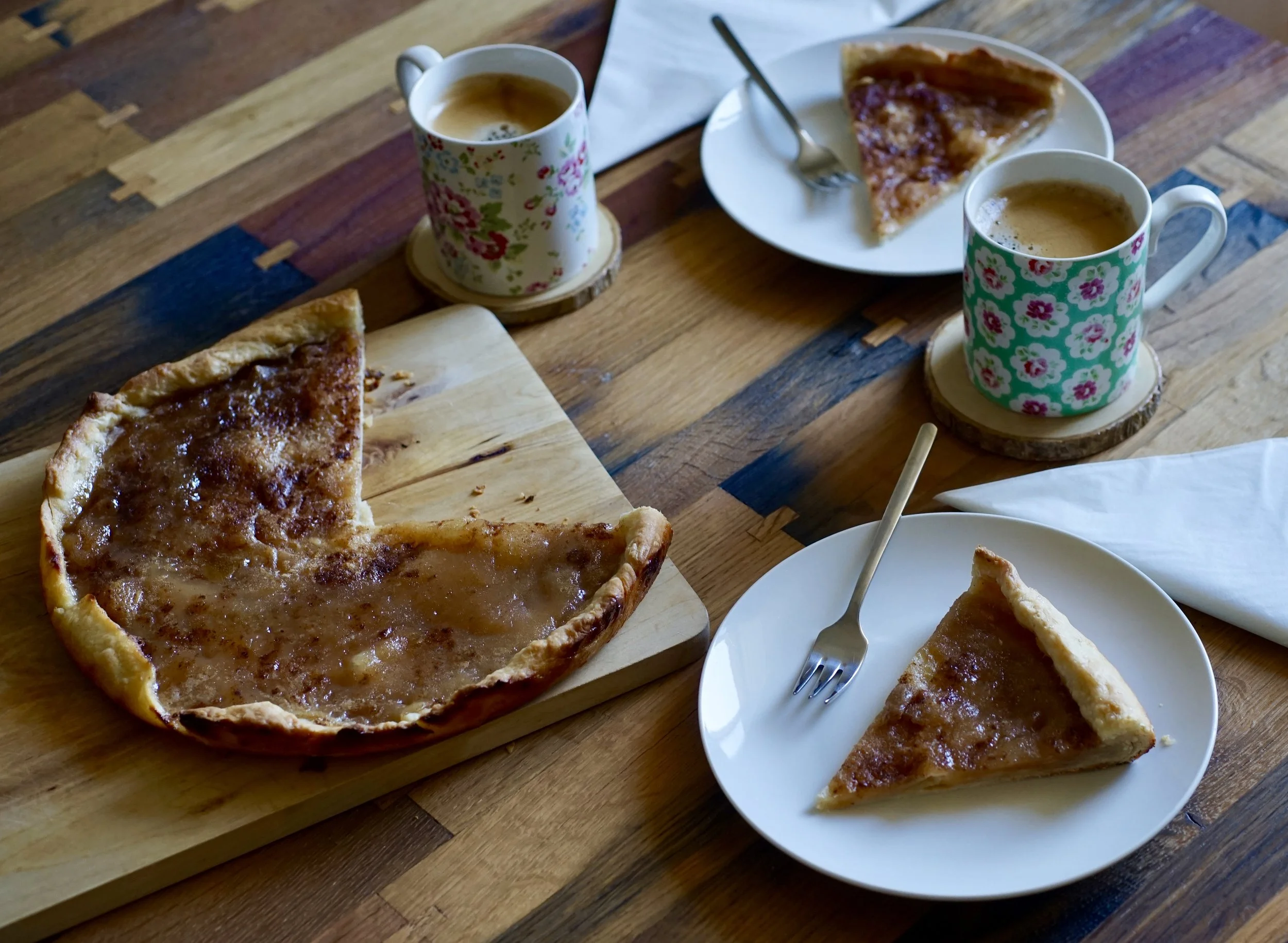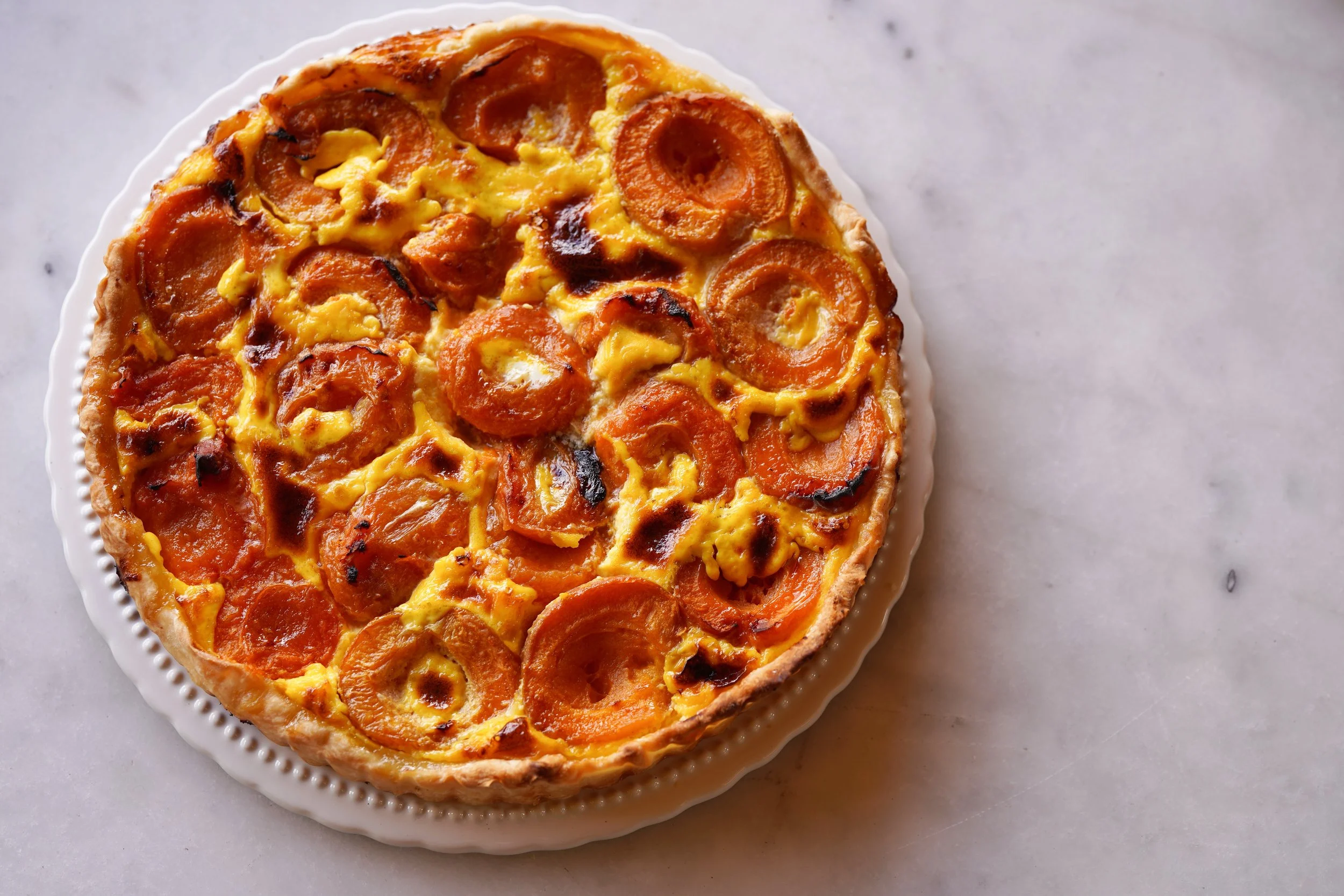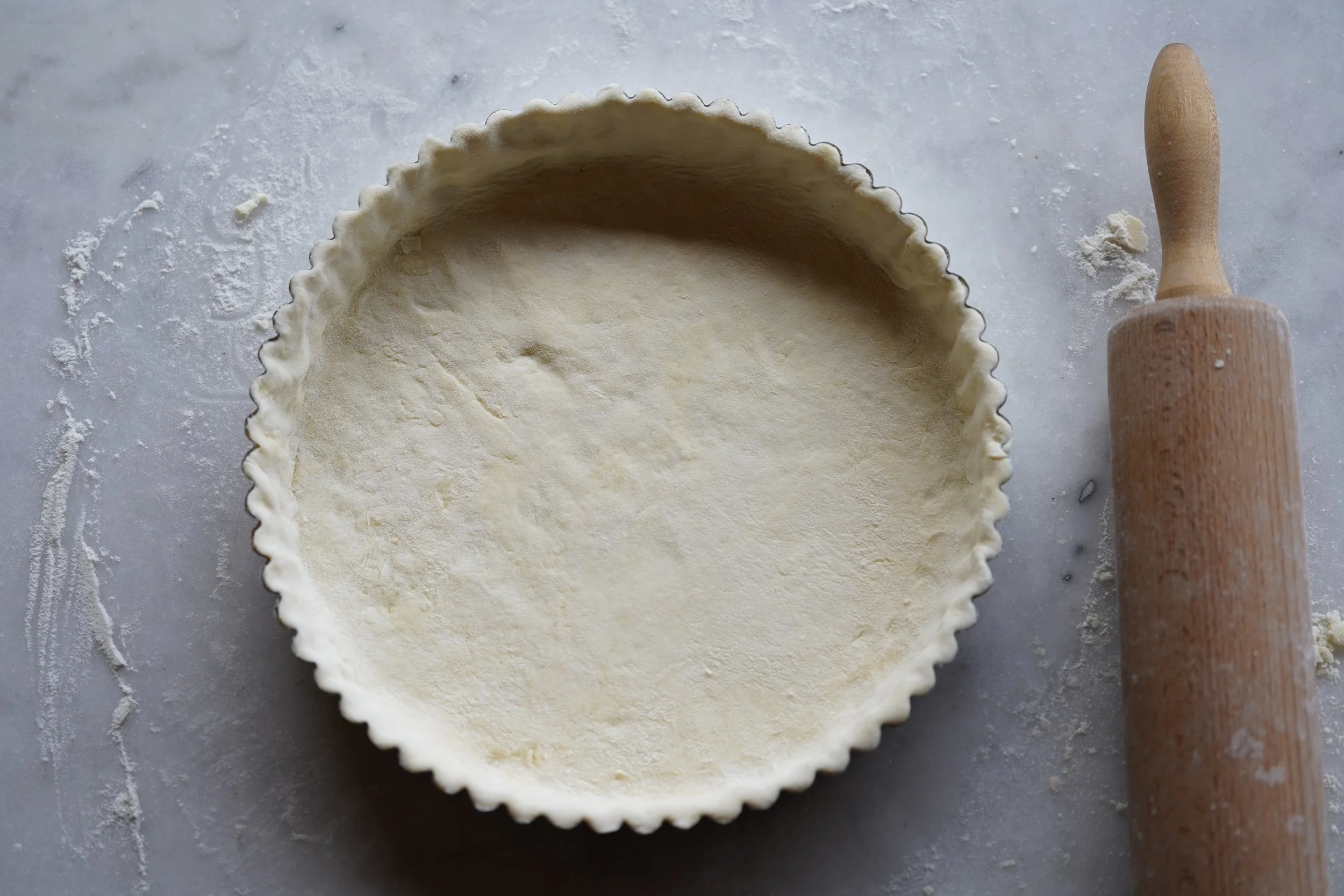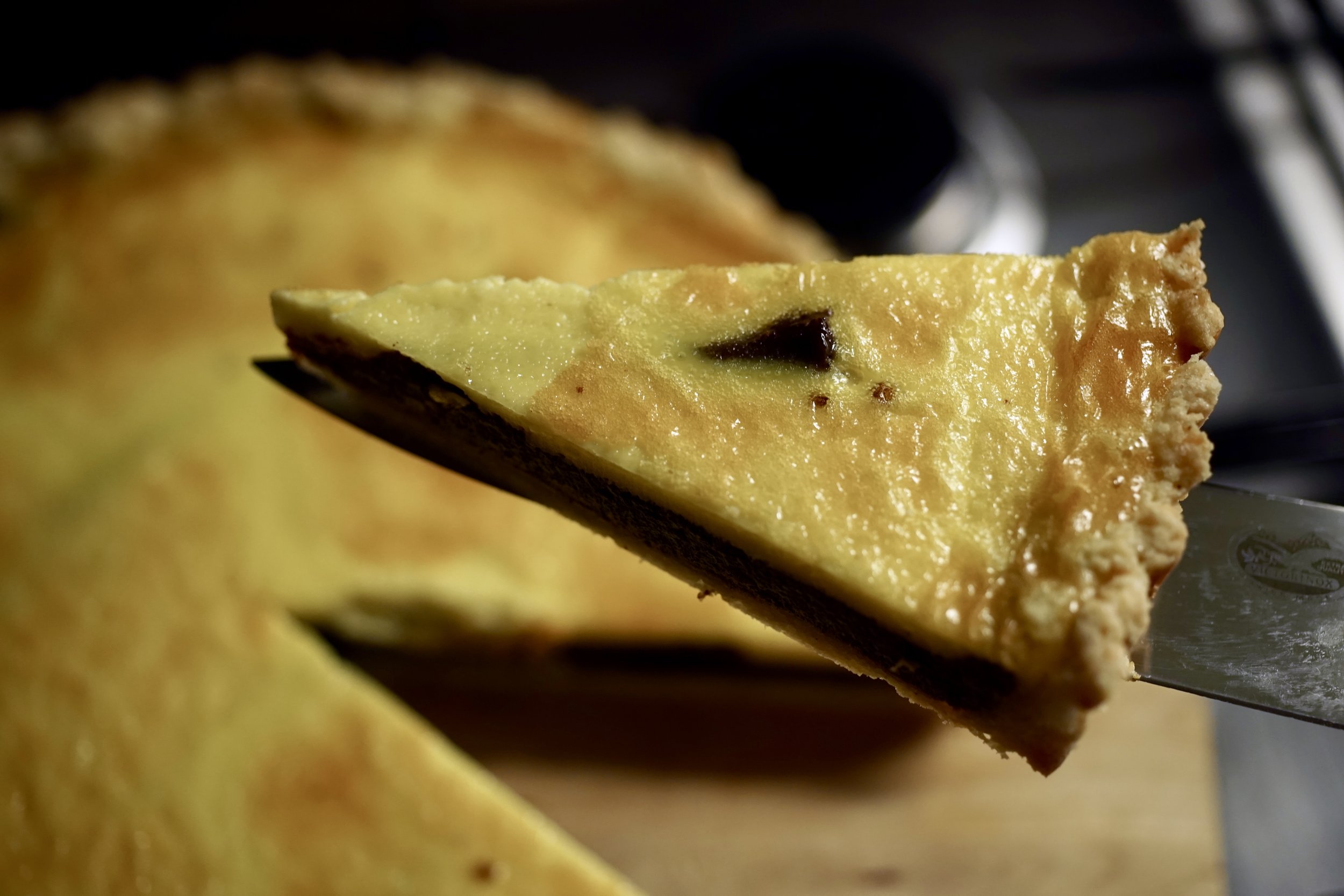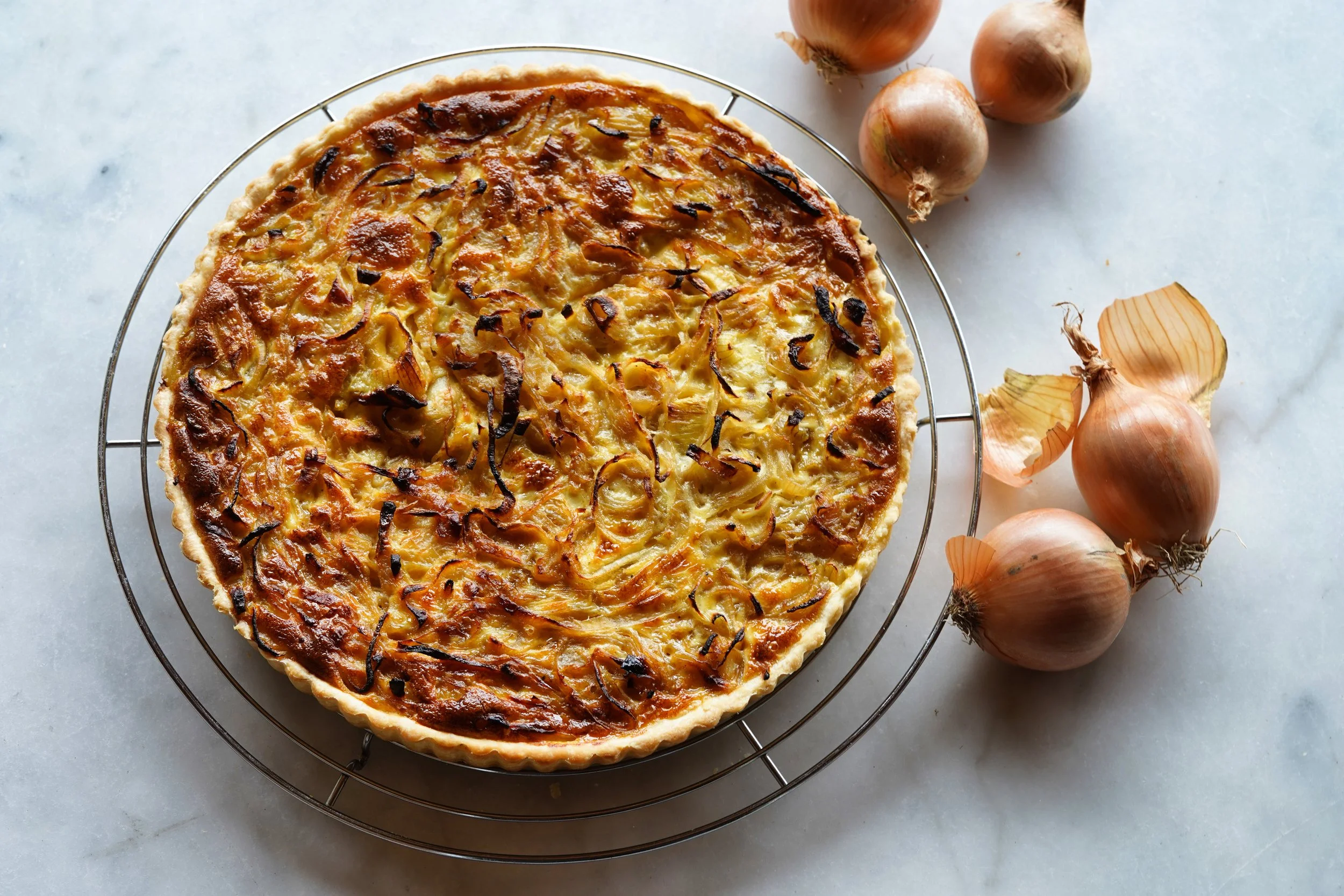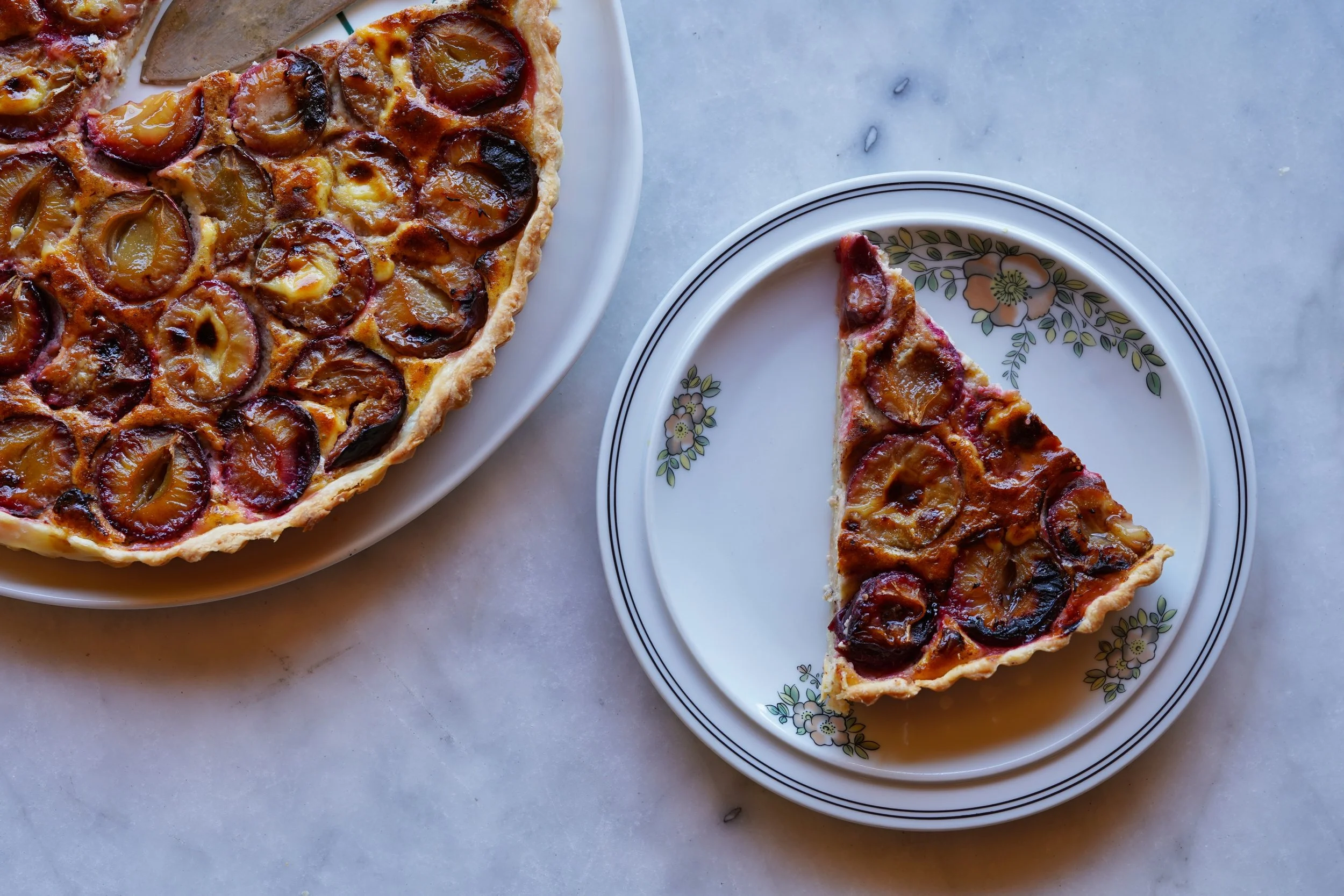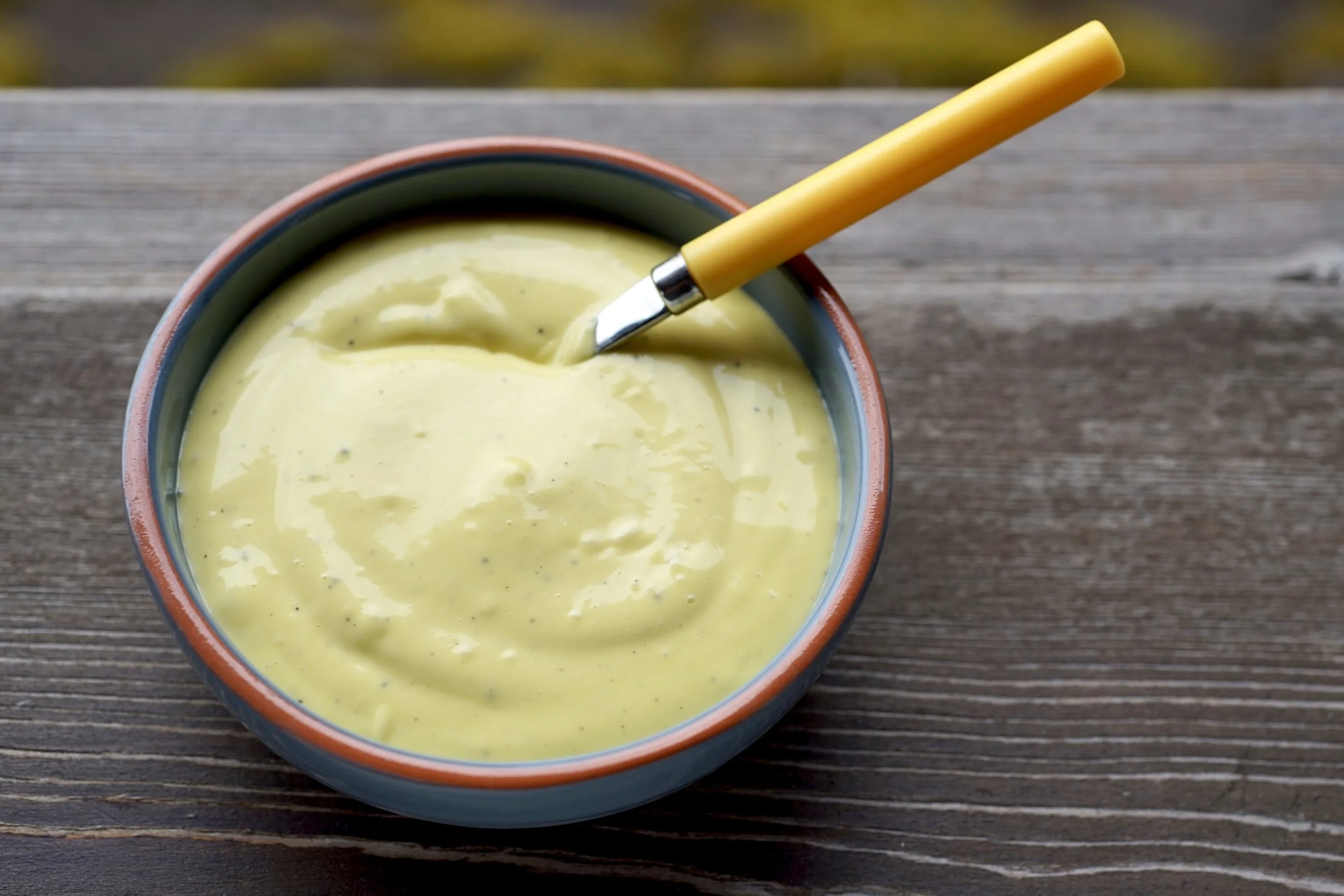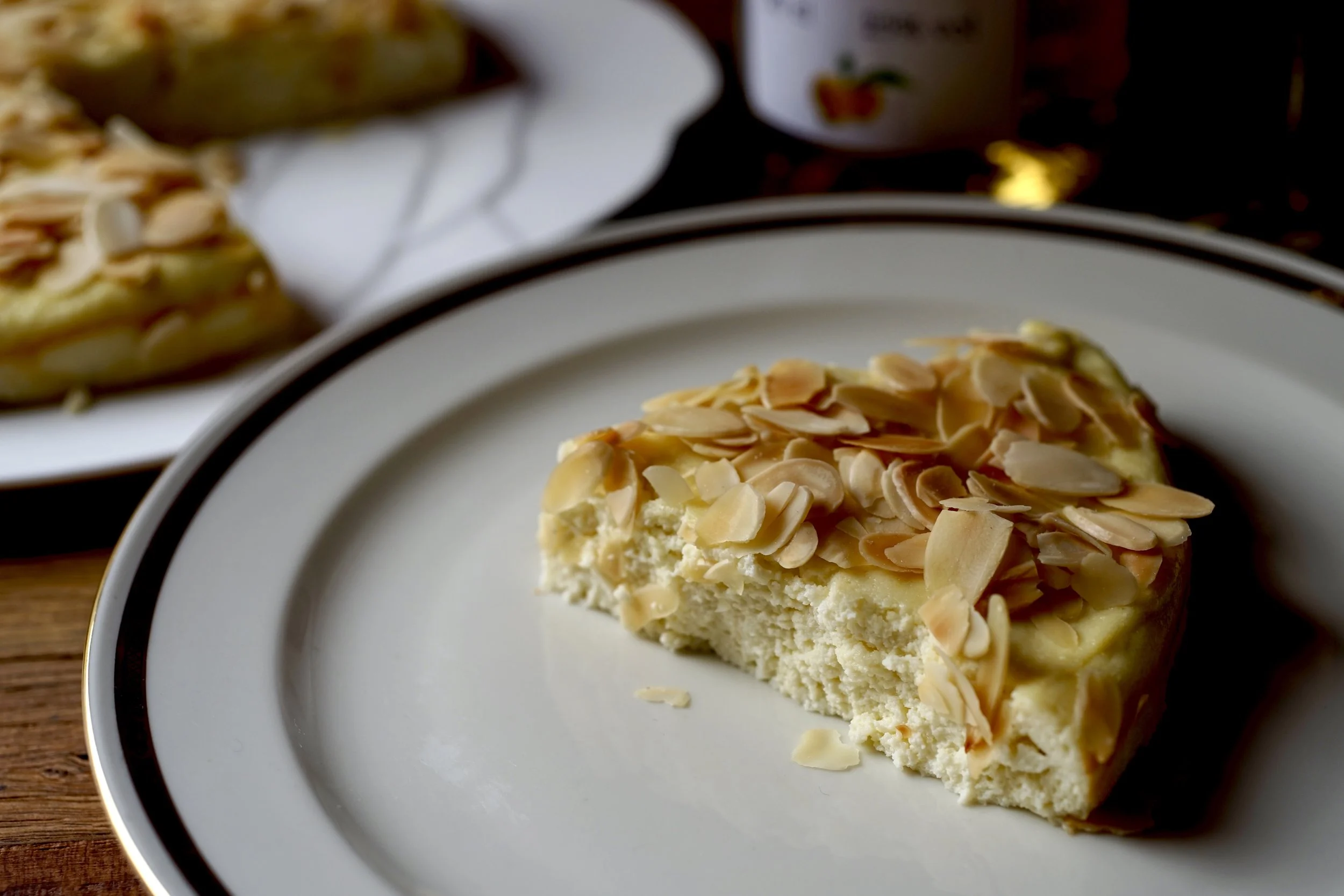Kräuterquarkwähe
For me, it’s been a summer of Wähe.
Wähe, Switzerland's favourite sweet or savoury tart, is a perpetual dish—as fruits and vegetables ripen throughout the year it serves as an excellent base for extra produce (and bits of meat and cheese in the fridge).
On hot days, why not bake one in the morning, then save it for a quick dinner? (It’s also portable, in case a quick supper-time cool-off in the river, lake, or Badi is necessary).
Customize your Wähe however you like. Bases can be made with and without yeast, with regular pastry dough, puff pastry, or with something more wholesome like spelt or whole wheat flour. I often double my dough recipe, roll it out, fill two tart forms and then freeze them until I need them.
The Guss, or liquid filling, can be rich, with lots of cream, lighter with milk, or with a tang, by adding quark or sour cream.
It’s always a crowd pleaser—last week on holiday in Eastern Switzerland, my Aunt served up her Äpfelwähe to a table of grinning faces, and even the three toddlers managed to stay still long enough to eat a large slice each.
This is my standard Wähe pastry base, but in the version photographed above I used a whole wheat flour (more in the notes below). The eggy filling gets a nice tang from the Quark and as for the Kräuter (herbs), these were harvested from my garden—basically a handful of whatever looked best. (It’s a bit brown on one side, as I forgot to rotate during baking.)
For a cheesier version, Betty Bossi has her Quiche Suisse, with grated Vacherin Fribourgeois.
Dough:
200 g flour
pinch of salt
80 g butter, cold
125 ml water, cold
Filling:
100 ml milk
100 ml cream
150 g Quark or sour cream
3 eggs
salt and pepper
3 tbsp breadcrumbs
100 g bacon in rashers, or cubes
a big handful of fresh herbs, chopped
In a large bowl, whisk together the flour and salt.
Add the cold butter in pieces and rub into the flour mixture with your fingers until you have small flakes.
Make a well in the middle of the flour and add the water. Mix this gently until a dough forms. Try not to overwork the dough or it will become tough.
Press the dough into a disc, wrap with plastic, and let cool in the fridge for about an hour.
Roll out your dough and line a 28 cm (11 inch) round tart pan. Poke the bottom of the dough all over with a fork, then keep the tart shell cool (preferably in the freezer) until you have the filling ready.
Preheat oven to 220 C / 425 F / gas mark 7.
Filling:
Whisk together the milk, cream, quark, eggs, salt and pepper.
Get your prepared tart shell and sprinkle with breadcrumbs.
Add the bacon, then the herbs to the tart shell.
Place the tart shell on a baking sheet and the pour the egg mixture over top.
Bake in the bottom part of the oven for about 35-40 minutes, or until the tart is nicely browned.
To save time, you can use store-bought dough like Kuchenteig / pâte brisée / pasta per crostate to line your pan.
Regular flour is fine, though you can experiment with different flours here, if you like. I used a whole wheat spelt flour here. This made the dough slightly drier, so I added a tablespoon more water.
Many herbs would work here. I used a mix of thyme, oregano, lavender, parsley, sage, chives, mint, and rosemary. Use what you have.
I used a half fat Halbfett Quark / Séré demi-gras / Quark mezzo grasso here. If you are feeling decadent, there’s the full fat Rahmquark / Séré à la crème / Quark alla panna, or go for the the lighter variety Magerquark / Séré maigre / Quark magro. More on Quark here (plus tips on availability in other countries). A quick substitution would be sour cream.
Don’t omit the breadcrumbs, they help absorb additional liquid and prevent a soggy bottom.
Garnish with more fresh herbs, if desired.

